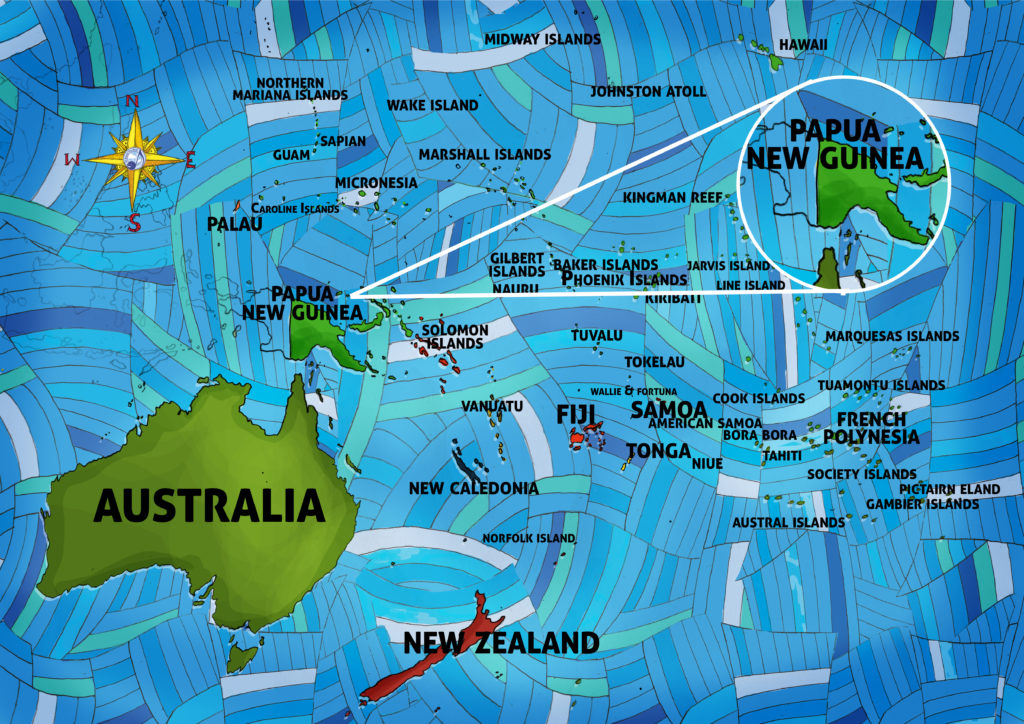We end our season of travels in Oceania and the Pacific Islands with Papuan musician O-Shen. This video of our favorite O-Shen song, “Burn It Up,” doesn’t take us anywhere, but the lyrics do inspire travel all over the Pacific. O-Shen’s unique road to international reggae stardom — get it? Say it: o-shen — began in Papua New Guinea where his American missionary parents raised him until he was fifteen. When they returned to Spokane, Washington, O-Shen (born Jason Hershey) had a difficult time fitting in and eventually ended up getting into trouble. (A little burglary, a few years in prison.) After his release O-Shen returned to Papua New Guinea and from there relocated to Hawaii where his PNG-based roots reggae has not only become increasingly popular but also more confidently multilingual–his catalog includes songs in Yabim, Rigo, Nakanai, Kiwai and Niugini pidgin.
What an honor to have you join me over these last few months to sing and learn along about Oceani and the Pacific. Rock on!


